{ DOWNLOAD AS PDF }
About Authors:
Vishal Soni*, Amruta Anjikar
CSIR-National Environmental Engineering Research Institute (NEERI),
Nagpur, Maharashtra
vishalsoni8912@yahoo.com
Abstract:
Pyrethrins and pyrethrum are the most frequently used home and garden insecticides in the India. They are often used in indoor sprays, pet shampoos, and aerosol bombs to kill flying and jumping insects. Pyrethrins are a common cause of insecticide poisonings. According to Ministry of Environment and Forest survey of poison control centers, they cause more insecticide poisoning incidents than any other class of insecticides except the organophosphates. Symptoms include headaches, dizziness, and difficulty breathing. Pyrethrins can trigger life-threatening allergic responses including heart failure and severe asthma. In laboratory animals exposed through eating, by injection, or through breathing, pyrethrins have caused anemia. Experiments with dairy cows suggest that nursing mothers exposed to pyrethrins can pass them on to their children. Pyrethrins disrupt the normal functioning of sex hormones. They inhibit binding of sex hormones to human genital skin and proteins in human blood. Pyrethrins are classified as “likely to be human carcinogens” by Environmental Protection Agency (EPA) because they cause thyroid tumors in laboratory tests. Farmers who use pyrethrins have an increased risk of developing leukemia. Pyrethrins are extremely toxic to bees, fish, and other aquatic animals. Following indoor treatments, pyrethrins have persisted up to 2 1/2 months in carpet dust.
Introduction:
Pyrethrum is the generic name given to a plant based insecticide derived from the powdered, dried flower heads of the pyrethrum daisy, chiefly Chrysanthemum cinerariaefolium, but also in C. coccineum and C. marshalli. Pyrethrins are the six constituent compounds with insecticidal properties that occur in these Chrysanthemum species. Be careful not to confuse pyrethrum with pyrethrin. Pyrethrin refers to a more refined extract of pyrethrum.1 Pyrethrins are the six insecticidal active compounds in pyrethrum. You will often find pyrethrum mixed with a synergist such as piperonyl butoxide (PBO). PBO gives pyrethrum an added "kick" that makes it more effective against insects.
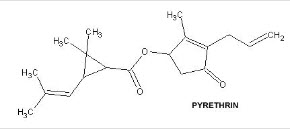
Figure 1: Structure of Pyrethrin
Use of Pyrethrum:
Pyrethrum is used widely throughout the world to control many human and household pests such as mosquitoes and houseflies. While it was used widely in agriculture before World War II, cheaper and more effective synthetic products have mostly replaced it for farm use.4More recently, new pyrethrum products, often solvent-based and including PBO, have appeared on the agriculture market.7 Other than home and garden uses, pyrethrins are used on a variety of agricultural crops and for structural and public health pest control. Worldwide, about 200,000 kilograms (440,000 pounds) of pyrethrins are used each year.6
Mode of Action:
Pyrethrum induces a toxic effect in insects when it penetrates the cuticle and reaches the nervous system. The pyrethrins that compose pyrethrum bind to sodium channels that occur along the length of nerve cells. Sodium channels are responsible for nerve signal transmission along the length of the nerve cell by permitting the flux of sodium ions. When pyrethrins bind to sodium channels, normal function of the channels is obstructed thereby resulting in hyper excitation if the nerve cell and, consequently, a loss of function of the nerve cell.9The shutdown of the insect nervous system and insect death are most often the consequences of insect exposure to pyrethrins. The commercially available combination of pyrethrins (0.17-0.33%) and piperonyl butoxide (2-4%) seems to be safe when applied to the skin in a non aerosol product.10
Hazards of Inert Ingredients:
Propane is used as an inert propellant in pyrethrin products. It can cause dizziness when inhaled. It is also “extremely flammable” and easily ignited by heat, sparks, or flame.2
Isobutene is also used as an inert propellant in pyrethrin products. It depresses the central nervous system and can cause dizziness when inhaled. Like propane, it is extremely flammable and easily ignited.4
Hydro treated light petroleum distillates (hydro treated kerosene) are used as an inert solvent in pyrethrin products. The Chemical Abstract Services number for this solvent is 64742-47-8. This solvent has caused skin tumors when applied to the skin of laboratory mice.6
Hydro treated heavy naphtha (white spirits) is also used as an inert solvent in pyrethrin products.1The Chemical Abstract Services number for this solvent is 64742-48-9. It is damaging to kidneys and the nervous system.8In a recent laboratory study, the offspring of animals exposed to white spirits developed “long-lasting and possibly irreversible changes” in brain cells. This damage to the brain was caused by an inability to maintain normal calcium concentrations.9
Toxicological Information:
Pyrethrum (as 100%):
Acute Oral Toxicity LD50 (rat) = 3500 mg/kg
Acute Skin Toxicity LD50 (rabbit) = >19000 mg/kg
Piperonyl Butoxide (as 100%):
Acute Oral Toxicity LD50 (rat) = 6150 mg/kg
Acute Skin Toxicity LD50 (rabbit) = 1880 mg/kg
How safe is Pyrethrum?
Pyrethrum has been extensively studied for its effects on people and the environment. Like all insecticides, pyrethrum is used to have a toxic effect on insects. Thus it is not correct to say that pyrethrum is "safe." At the same time, we are confident that pyrethrum has a very good toxicity profile.5For mammals, doses that elicit toxic reactions are significantly larger than the exposures people typically experience in using pyrethrum based products.
Effect on the Environment:
* Fate in water: Pyrethrum compounds are broken down in water to nontoxic products.10
* Soil persistence: Soil application studies of pyrethrum showed a half life of only 1-2 hours.10 when used indoors, pyrethrum can persist much longer; up to two months or more in carpet dust.11
* Wild life: Pyrethrum is extremely toxic to fish such as bluegill and lake trout, while it is slightly or moderately toxic to bird species, such as mallards and bobwhite quail. Natural pyrethrins are highly fat soluble, but are easily metabolized and thus do not accumulate in the body. Because pyrethrin-I and pyrethrin-II have multiple sites in their structures that can be readily attacked in biological systems, it is unlikely that they will concentrate in the food chain.12
Effect on beneficial arthropods: Synthetic pyrethroids are broad spectrum insecticides and are notorious for killing and repelling beneficial arthropods. However, since pyrethrum residues on the plant break down quickly, the effect on natural enemies is reduced. Pyrethrum is highly toxic to bees. The average lethal dose (LD50) for honeybees was measured at .022 micrograms per bee.13Direct hits on honeybees and beneficial wasps are likely to be lethal.13
Effect on Human Health:
* Acute Toxicity: On broken skin, pyrethrum produces irritation and sensitization, which is further aggravated by sun exposure. Absorption of pyrethrum through the stomach and intestines and through the skin is slow.14However; humans can absorb pyrethrum more quickly through the lungs during respiration. Response appears to depend on the pyrethrum compound used. Inhaling high levels of pyrethrum may bring about asthmatic breathing, sneezing, nasal stuffiness, headache, nausea, lack of coordination, tremors, convulsions, facial flushing and swelling, and burning and itching sensations.15The lowest lethal oral dose of pyrethrum is 750 mg/kg for children and 1,000 mg/kg for adults. Oral LD50 values of pyrethrins in rats range from 200 mg/kg to greater than 2,600 mg/kg. Some of this variability is due to the variety of constituents in the formulation. Pyrethrins are a common cause of insecticide poisonings.22 Researchers found that pyrethrins, with the synergist piperonyl butoxide, caused over 9,000 incidents. Only the organophosphate insecticides caused more insecticide poisoning incidents.13Some symptoms of pyrethrin poisoning in people, headaches and dizziness, are related to disruptions of the nervous system. Laboratory tests have demonstrated that pyrethrins cause several neurological disruptions in mammals.24These may be the cause of the sodium channel disruption that results in their toxic effects in insects, or an additional effect. Researchers from the University of Alexandria (Egypt) showed that pyrethrins inhibited calcium uptake in rat brain cells. Calcium plays a “vital role”15in the nervous system, promoting the normal release of transmitter chemicals from junctions between nerves and stabilizing the membrane surrounding nerve cells.15Two groups of researchers, from the University of Mississippi Medical Centerand the University of Tampere Medical School (Finland) showed that pyrethrins disrupt energy production in brain cells.16, 17 Pyrethrins also affect physiological processes that are not related to the nervous system. For example, researchers at the Osaka City Institute of Public Health and Environmental Sciences (Japan) showed that in rat livers pyrethrins inhibit mitochondria; the cellular bodies that convert food to usable energy.18Pyrethrins can trigger allergic responses19, 20that range from unpleasant to life-threatening. Skin rashes, asthma, and hives caused by exposure to pyrethrins or pyrethrum have been reported in medical literature since the 1920s and 1930s.
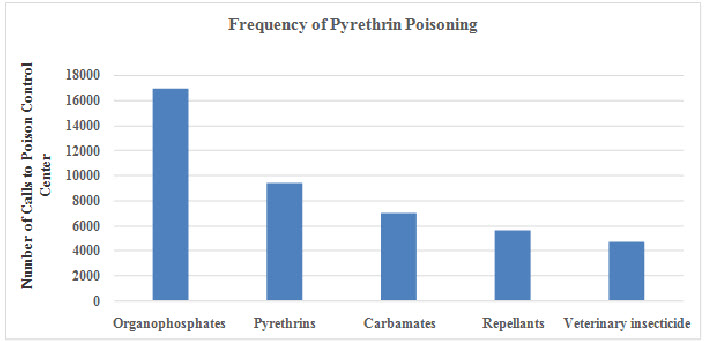
Figure 2: Frequency of Pyrethrin Poisoning
Organ Toxicity: In mammals, tissue accumulation has not been recorded. At high doses, pyrethrum can be damaging to the central nervous system and the immune system.25When the immune system is attacked by pyrethrum, allergies can be worsened. Animals fed large doses of pyrethrins may experience liver damage. Rats fed pyrethrin at high levels for two years showed no significant effect on survival, but slight, definite damage to the livers was observed.23
* Fate in Humans and Animals: Pyrethrins and their metabolites are not known to be stored in the body nor excreted in the milk. The urine and feces of people given oral doses of pyrethrum contain chrysanthemumic acid and other metabolites.21These metabolites are less toxic to mammals than are the parent compounds. Pyrethrins I and II are excreted unchanged in the feces. Other pyrethrum components undergo rapid destruction and detoxification in the liver and gastrointestinal tract.30
* Effects on the Circulatory System: Pyrethrins affect both sugar levels and oxygen-carrying ability of blood. Researchers from the University in Rajasthan (India) showed that an injection of pyrethrins caused gerbil blood sugar levels to rise between 30 and 70 percent (depending on dose). Blood sugar peaked an hour after treatment, but the increase persisted for several days.23 The same researchers showed that an injection of pyrethrins caused a decrease in the amount of hemoglobin (oxygen-carrying molecules) in the blood27, as well as a decrease in the number of red blood cells. Hemoglobin concentration remained low for 2–3 weeks.28 Other types of exposures with a longer duration caused similar effects. A three-month feeding study with rats found pyrethrins caused a decrease in the amount of hemoglobin in females at doses at or above 170 milligrams of pyrethrins per kilogram of body weight (mg/kg) per day (the middle dose in this experiment). Similar effects were found in males at higher exposures. A three month inhalation study found that pyrethrins caused anemia at doses at or above 0.07 milligrams per liter of air in males (all but the lowest dose in this experiment). They also caused anemia in females, although at higher exposures.
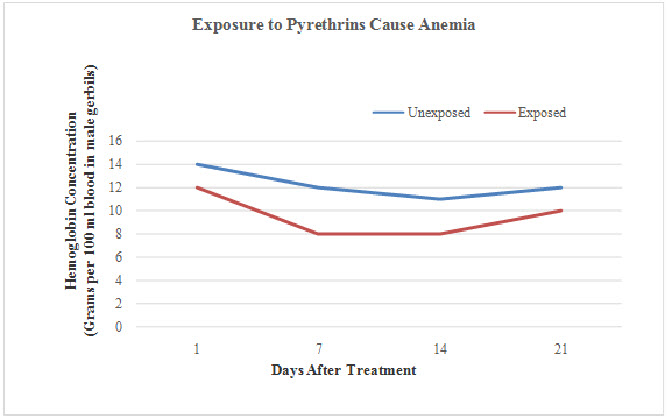
Figure 3: Exposure to Pyrethrins Cause Anemia
Disruption of Hormone Systems: The impact that environmental pollutants can have on the normal function of human and animal hormone systems has been a significant concern in the last decade.31 Hormones are biologically active molecules that control all responses and functions of frequency of several cancers in rats. The incidence of liver tumors was higher in exposed female rats than in unexposed ones. Also, in both sexes, the incidence of thyroid tumors was greater in exposed rats than in unexposed ones.34 Other carcinogenicity studies showed that the incidence of lung cancers in exposed male mice was greater than in unexposed ones37 and that the incidence of parathyroid tumors was greater in exposed rats than in unexposed ones.38
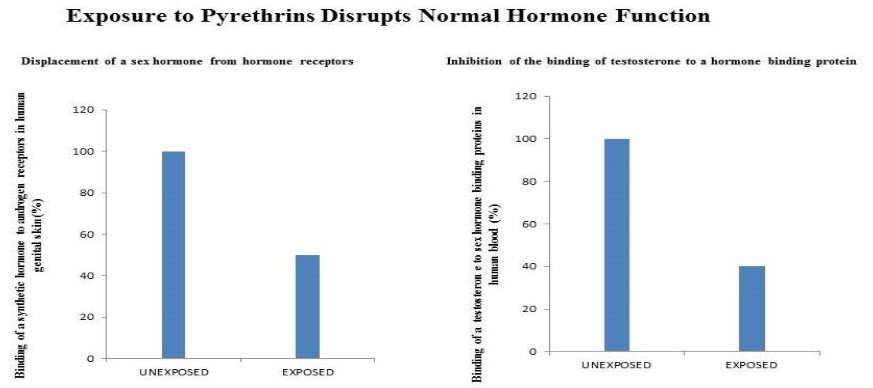
Figure 4: Exposure to Pyrethrins Disrupts Normal Hormone Function
Chronic Toxicity: Overall, pyrethrins have low chronic toxicity to humans and the most common problems in humans have resulted from the allergenic properties of pyrethrum. Patch tests for allergic reaction are an important tool in determining an individual’s sensitivity to compounds.38Pyrethrum can produce skin irritation, itching, pricking sensations and local burning sensations. These symptoms may last for about two days40reports more serious chronic effects, including circulatory and hormonal effects.
* Reproductive Effects: Rabbits that received pyrethrins orally at high doses during the sensitive period of pregnancy had normal litters. A group of rats fed very high levels of pyrethrins daily for three weeks before first mating had litters with weanling weights much lower than normal.42,43 Overall pyrethrins appear to have low reproductive toxicity.26
* Carcinogenic Effects: Pyrethrins are associated with increased cancer risks among farmers and have also caused cancer in laboratory tests.32 Researchers from the National Cancer Institute studying risk factors for leukemia found that farmers exposed to pyrethrins used for pest control on livestock had an increased risk of developing leukemia.27, 29 Exposure to pyrethrins was associated with a 3.7-fold increase in risk.33In 1999 evaluated that the ability of pyrethrins to cause cancer. The agency concluded that pyrethrins should be classified as “likely to be a human carcinogen by the oral route.” This evaluation was based on tests which demonstrated increases in the frequency of several cancers in rats.23 The incidence of liver tumors was higher in exposed female rats than in unexposed ones. Also, in both sexes, the incidence of thyroid tumors was greater in exposed rats than in unexposed ones.36,39 Other carcinogenicity studies showed that the incidence of lung cancers in exposed male mice was greater than in unexposed ones37 and that the incidence of parathyroid tumors was greater in exposed rats than in unexposed ones.8
Effects on Soil Fertility: Insecticides are generally not expected to have impacts on plants. However, they can indirectly affect plant growth if they change the growth or abundance of soil microorganisms that are important in the maintenance of soil fertility.41 Scientists at the University of Ibadan (Nigeria) showed that treatment of agricultural soils with pyrethrin caused an increase in the abundance of soil bacteria and a decrease in the abundance of soil fungi. In addition, the number of these species was less in treated soil than in untreated soil.47The end result was a reduction in the amount of the important soil nutrient nitrogen. Another study, from the Central Rice Institute (India), showed that pyrethrin treatment of rice fields reduced the nitrogen- fixing ability of the soils as much as 80 percent. Nitrogen fixation is the conversion (mostly by bacteria) of atmospheric nitrogen into a form that is usable by plants.46
Persistence: Outdoors, pyrethrins persist only for a short time.43 For example, after application of pyrethrins to bare soil, the half-life (the time required for half of the applied pyrethrin to break down or move away from the application site) was two hours or less. Pyrethrins persist much longer indoors than they do outdoors. Studies conducted at the University of Ulm and the Fraunhofer Institute of Toxicology and Aerosol Research (Germany) found that pyrethrins persisted 60 hours after treatment on horizontal surfaces, two weeks after treatment on airborne particles, and over two months in carpet dust.
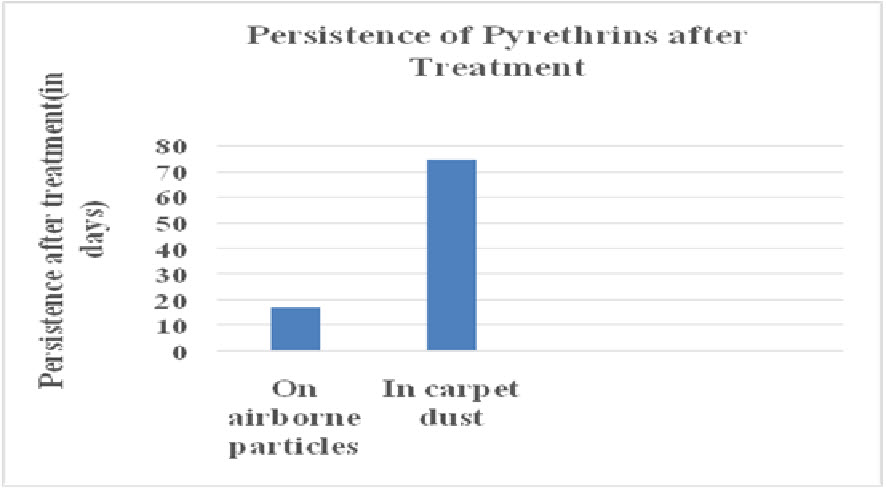
Figure 5: Persistence of Pyrethrins after treatment
REFERENCE ID: PHARMATUTOR-ART-2178
|
PharmaTutor (ISSN: 2347 - 7881) Volume 2, Issue 6 Received On: 04/04/2014; Accepted On: 10/04/2014; Published On: 01/06/2014 How to cite this article: V Soni, A Anjikar; Use of Pyrethrin/ Pyrethrum and its Effect on Environment and Human: A Review; PharmaTutor; 2014; 2(6); 52-60 |
References:
[1]Toxicological profile for pyrethrins and pyrethroids. Draft. P.147-150. Dept. of Health and Human Services.
[2]McCord, C.P., C.H. Kilker, and D.K. Minster. Pyrethrum dermatitis. 1921. JAMA 77(6): 448-449.
[3]Whitmore, R.W., J.E. Kelly, and P.L. Reading. National home and garden pesticide use survey. Final report, vol. 1: Executive summary, results, and recommendations. Research Triangle Park NC: Research Triangle Institute. 1992.
[4]Casida, J.F. and G.B. Quistad. Metabolism and synergism of pyrethrins. In Pyrethrum flowers: production, chemistry, toxicology, and uses, ed. J.E. Casida and G.B. Quistad. New York NY: Oxford University Press. 1995. Pp. 259-276.
[5]Ware, G.W. The pesticide book. Fresno CA: Thomson Publications. 2000. Pp. 65-66.
[6]Crosby, D.G. Environmental fate of pyrethrins. In Pyrethrum flowers: production, chemistry, toxicology, and uses, ed. J.E. Casida and G.B. Quistad. New York NY: Oxford University Press. 1995. Pp. 194-213.
[7]Calif. Environmental Protection Agency. Dept. of Pesticide Regulation. Summary of pesticide use report data: 2000, indexed by chemical. 2001. Pp. 341-343.
[8]Ray, D.E. and P.J. Forshaw. Pyrethroid insecticides: Poisoning syndromes, synergies, and therapies. Clin. Toxicol. 2000. 38:95-101.
[9]Federal Insecticide, Fungicide, and Rodenticide Act Sec. 2.
[10]40 Code of Federal Regulations 158.340.
[11]J. Blondell, Health Effects Div. U.S. EPA. Office of Pesticides and Toxic Substances. Undated memo. Human insecticide exposures reported to poison control centers in 1991.
[12]Shafey, O., L. Mehler, and L. Baum. Illnesses associated with use of automatic insecticide dispenser units—selected states and United States, 1986–1999. 2000. MMWR 49(22): 492-495.
[13]Ramadan, A.A. et al. Action of pyrethroids on K+-stimulated calcium uptake by, and [3H] nimodipine binding to, rat brain synaptosomes. Pest. Biochem. Physiol. 1988. 32:114-122.
[14]Prasada Rao, K.S., C.S. Chetty, and D. Desaiah. 1984. In vitro effects of pyrethroids on rat brain and liver ATPase activities. J. Toxicol. Environ. Health 14: 257-265.
[15]Kakko, I., T. Toimela, and H. Tähti. Piperonylbutoxide potentiates the synaptosome ATPase inhibiting effect of pyrethrin. Chemosphere 2000. 40: 301-305.
[16]Yamano, T. and S. Morita. Effects of pesticides on isolated rat hepatocytes, mitochondria, and microsomes. Arch. Environ. Contam. Toxicol. 1993. 25: 271-278.
[17]Adams, R.M. Occupational skin disease. New York: Grune& Stratton. 1983. p. 362.
[18]Wax, P.M. and R.S. Hoffman. Fatality associated with inhalation of a pyrethrin shampoo. Clin. Toxicol. 1994. 32: 457-460.
[19]Wagner, S.L. Fatal asthma in a child after use of an animal shampoo containing pyrethrin. West J. Med. 2000. 173:86-87.
[20]Zucker, A. Investigation of purified pyrethrum extracts. Ann. Aller. 1965. 23: 335-339.
[21]Karel, A.K. and S.C. Saxena. Investigation on the acute toxic effect of pyrethrum on the blood glucose and of glucose administration on the acute pyrethrum toxicity in MerioneshurrianaeJerdon (Rodentia). Arch. Intern.Physiol.Biochim. 1975. 83:1925.
[22]Saxena, S.C. and A.K. Karel. A note on the effect of pyrethrum on haemoglobin concentration of Indian desert gerbils, Merioneshurrianae. Pyreth. 1974. 12:161-162.
[23]Karel, A.K. and S.C. Saxena. Investigations on the acute toxic effect of pyrethrum on various haemotological aspects of Merioneshurrianae Jerdon, the Indian desert gerbil. Pyreth. 1975. 13: 61-67.
[24]World Health Organization and Food and Agricultural Organization. 2000. Pesticide residues in food—1999. [Part II] Toxicological evaluations. Geneva, Switzerland: World Health Organization. Pp. 277-278.
[25]Schoenig, G.P. Mammalian toxicology of pyrethrum extract. In Pyrethrum flowers: production, chemistry, toxicology, and uses, ed. J.E. Casida and G.B. Quistad. New York NY: Oxford University Press. 1995. Pp. 249-257.
[26]Memo from L.J. Hansen to L. DeLuise. U.S. EPA. Office of Pesticides and Toxic Substances. Pyrethrum extract (technical). Evaluation of a two-generation rat reproduction study to support reregistration of pyrethrum extract. 1991.
[27]World Health Organization and Food and Agriculture Organization of the United Nations. 2000. Pesticide residues in food—2000. FAO Plant Production and Protection Paper 163. p. 114.
[28]National Research Council. Commission on Life Sciences. Board on Environmental Studies and Toxicology. 1999. Hormonally active agents in the environment. Washington, D.C.: National Academy Press, p. 10.
[29]Eubanks, M.W. Hormones and health. Environ. Health Persp. 1997. 105: 482-487.
[30]Eil, C. and B.C. Nisula, The binding properties of pyrethroids to human skin fibroblast androgen receptors and to sex hormone binding globulin. J. Steroid Biochem. 1990. 35: 409-414.
[31]Ramadan, A.A. et al. Actions of pyrethroids on the peripheral benzodiazepine receptor. Pest. Biochem. Physiol. 1988. 32: 106-113.
[32]Brown, L.M. et al. Pesticide exposures and other agricultural risk factors for leukemia among men in Iowa and Minnesota. Cancer Res. 1990. 50: 6585-6591.
[33]U.S. EPA. Office of Pesticide Programs. Health Effects Division. Cancer Assessment Review Committee. Cancer Assessment Document: Evaluation of the carcinogenic potential of pyrethrins. Executive summary. Washington, D.C. 1999.
[34]Hurley, P.M., R.N. Hill, and R.J. Whiting. Mode of carcinogenic action of pesticides inducing thyroid follicular cell tumors in rodents. Environ. Health Persp. 1998. 106: 437-445.
[35]Extension Toxicology Network... Pesticide information profile: Pyrethrins. http://pmep.cce.cornell.edu/profiles/extoxnet/pyrethrins- ziram/pyrethrins-ext.html. 2001
[36]Campbell, A. and M. Chapman. Handbook of poisoning in dogs and cats. Malden MA: Blackwell Science. 2000. p. 43.
[37]Beasley, V.R. and H.L. Trammel. Incidence of poisonings in small animals. Curr. Vet. Ther. 1989. 10: 97-113.
[38]Hudson, R. H., R.K. Tucker, and M.A. Haegele. Handbook of toxicity of pesticides to wildlife. Second edition. Washington, D.C.: U.S. Dept. of the Interior. Fish and Wildlife Service. 1984. p. 68.
[39]Saxena, S.C. and P.P. Bakre. Toxicity of pyrethrum to Blue Rock pigeon. Pyreth. 1978. 14: 47-48.
[40]Saxena, P. and Saxena, S.C. Effect of pyrethrum on body and organ weights, food consumption and faeces production of the house sparrow, Passer domesticus. Pyreth. 1973. Post 12: 76.
[41]Johnson, W.W. and M.T. FInley. Handbook of acute toxicity of chemicals to fish and aquatic invertebrates. Washington, D.C.: U.S. Dept. of the Interior. Fish and Wildlife Service. 1980. p. 70.
[42]Burridge, L.E and K. Haya. Lethality of pyrethrins to larvae and postlarvae of the American lobster (Homarusamericanus). Ecotoxicol. Environ. 1997. Safety 38: 150-154.
[43]Sanders, H.O. Toxicity of pesticides to the crustacean Gammaruslacustris. Technical Paper No. 25. Washington, D.C.: U.S. Dept. of the Interior. Fish and Wildlife Service. Bureau of Sport Fisheries and Wildlife. 1969.
[44]Gabriel, K.L. and R. Mark. Environmental toxicology of pyrethrum extract. In Pyrethrum flowers: production, chemistry, toxicology, and uses, ed. J.E. Casida and G.B. Quistad. New York NY: Oxford University Press. 1995. Pp. 277-283.
[45]Appel, A. G., Knockdown efficiency and materials’ compatibility of wasp and hornet spray formulations to honey bees (Hymenoptera: Apidae). J. Econ. Entomol. 1990, 83: 1925-1931.
[46]Ministry of Environment and Forest ‘A Survey of Poison Control Centers in 2001’.
[47]Berger-Preib, E.K. Levssen, and A. Preib. Analysis of individual natural pyrethrins in indoor matrices by HRD/ECD. J. High Resol. Chromatography. 20:284-289.
NOW YOU CAN ALSO PUBLISH YOUR ARTICLE ONLINE.
SUBMIT YOUR ARTICLE/PROJECT AT articles@pharmatutor.org
Subscribe to Pharmatutor Alerts by Email
FIND OUT MORE ARTICLES AT OUR DATABASE









